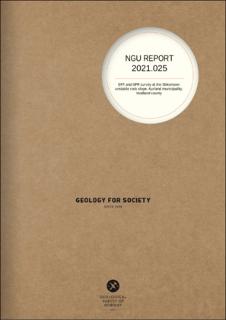| dc.description.abstract | The Geological Survey of Norway (NGU) carries out systematic mapping of unstable rock-slopes in Norway. Stampa, in Aurland fjord, is among the largest unstable rock-slopes identified so far in Norway. This large instability is composed of smaller unstable sections, one of which called Stiksmoen. Stiksmoen, is located at around 120 m.a.s.l., extends over 23 000 m2, and faces the Flåm harbor. In the 70s, during the construction of the Fretheim tunnel, the site was mapped, and its displacement rates were measured, but the lower limit of the instability was not accurately established. NGU started the hazard and risk assessment of this site in 2014, by installing equipment to measure displacement rates. In April 2021, a geophysical survey was carried out at Stiksmoen to increase knowledge about the location via Resistivity and Georadar measurements. By mapping the sliding surface, the volume of the unstable rock masses can be computed and thus the related risk estimated. ERT investigations consist of five profiles measured with Multiple Gradient array and electrode spacing five meters. Processing took place with software DC2DPRO v.0.99 and revealed extreme variations in resistivity and abrupt changes in the geoelectrical regime. Extremely high resistivities are expected in such pure\/fractured bedrock environments but extremely low values, need further explanation. Simultaneously to resistivity measurements, induced polarization (IP) method was applied measuring electrical chargeability, which revealed the strong influence of existing mineralization to the results which was attributed to graphite sheets (highly conductive mineral) within the dominating phyllites at Stiksmoen. Due to the difficulty of the terrain, Georadar profiling was measured applying step-mode for the PulseEKKO PRO \/ Ultra Receiver system i.e., the GPR was mounted on a frame and each trace was gathered manually. Processing of the three GPR profiles collected with EKKO_project v.5 software, showed a penetration of slightly over 20 meters within the unstable area and almost 30 behind the back scarp. The detected reflectors helped finetune the ERT interpretation of a proposed glide plane. Application of ERT and IP measurements has helped to come up with a proposed glide plane but also mark the potential influence of graphite in the sliding process at Stiksmoen. According to our interpretation, the volume of unstable masses in the area is 670.000 m3.\r | |

